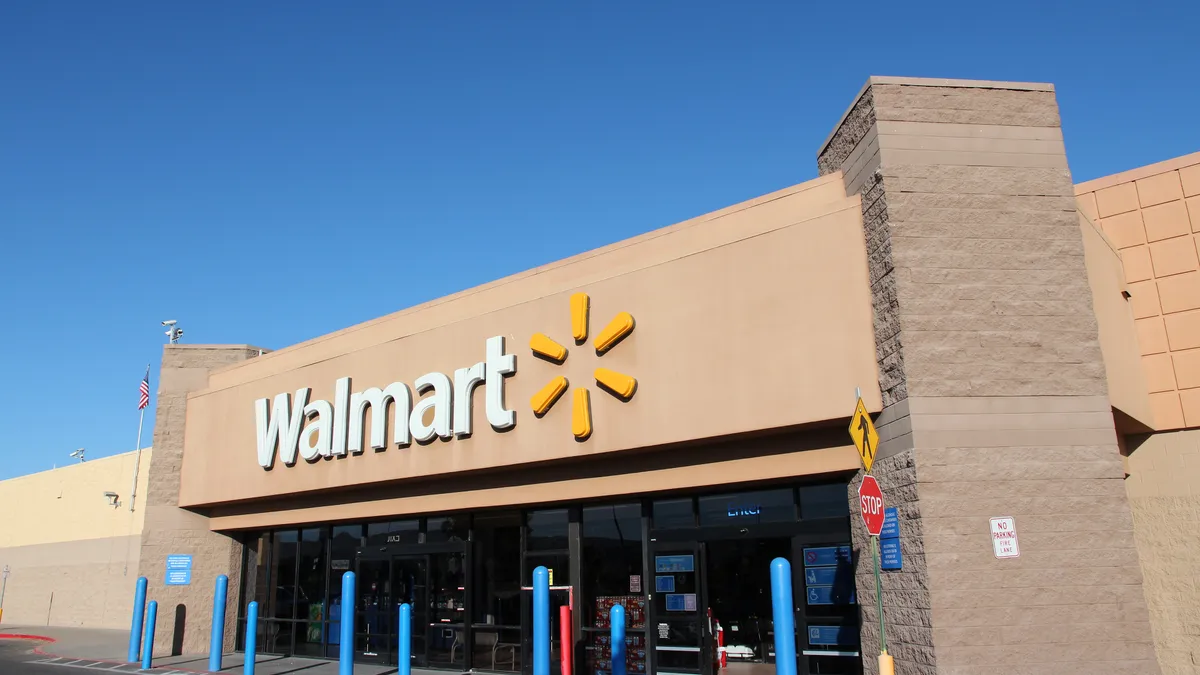Dive Brief:
-
Wal-Mart Stores Inc. is streamlining its buying efforts to boost its online assortment, the company told Retail Dive on Tuesday. If an item is available for sale in the store, it will also be approved for the online assortment and the store's buyer will be able to purchase those items for both channels (stores and online). In the past, a supplier would have to deal with two separate buyers to make the item available for sale in stores and online, a spokesperson said.
-
The effort is not quite the merging of e-commerce and brick-and-mortar buying operations as described by vendor sources to Reuters. "The stores and Walmart.com buying teams will not be merging and will continue to operate as two separate teams," Wal-Mart spokesperson Lorenzo Lopez told Retail Dive. "We are merely simplifying the process that allows for products in stores to be included in the Walmart.com assortment."
-
The news comes as Wal-Mart is also shaking up its leadership teams, an overhaul that Marc Lore (president and CEO of Wal-Mart’s e-commerce unit) and Doug McMillon (Wal-Mart's president and CEO) told employees last month would help better align its store and e-commerce operations.
Dive Insight:
Flashback to when Wal-Mart wouldn’t price-match its own web prices for its brick-and-mortar customers. That changed in 2014. But such incremental change appears to have given way to a major cultural and operational transformation between the retail giant’s digital and physical initiatives since the acquisition of e-commerce upstart Jet last year for $3.3 billion.
That move was Wal-Mart swallowing up Jet's “secret sauce” — a pricing algorithm that enables customers to drive down their final cost through a host of fulfillment and customer service options. But it also entails major operational changes to bust down the barriers between the retailer’s e-commerce and brick-and-mortar experience, well beyond price matching.
Vendors will still need to interact with Wal-Mart's e-commerce buying teams if the goods they're supplying are online-only items. Still, the new buying policy could go far in boosting Wal-Mart’s online assortment, which pales in comparison to Amazon, which in turn could improve its search and sales; Lopez said that indeed is the goal, though he declined to say what percentage of its brick-and-mortar assortment it eventually hopes to feature online.
“The one challenge I see that is going to be a big complexity for Wal-Mart and Jet is that they need to acquire a lot of customers,” Keith Anderson, vice president of strategy and insight at e-commerce analytics firm Profitero, told Retail Dive. “Jet spent exorbitantly to do that.”
Wal-Mart appears to believe that new customers could be found among Amazon’s non-Prime customers. Wal-Mart last month ended its Amazon Prime-like ShippingPass membership program, which gave members free two-day shipping on most orders for a $49 annual fee. In its place, Wal-Mart now offers free two-day shipping to all customers purchasing orders over $35 (down from its previous $50 threshold), while shipping to stores will be free on eligible orders. Anderson compares that philosophy to catering to cable television customers who would rather pay ala carte than pay for a slew of channels they don’t want.
But it’s still not clear if Jet’s algorithm will be able to cleanly accrue cost savings to shoppers, or if the costs of e-commerce will inevitably interfere with Wal-Mart’s ability to deliver “always low prices” — the bedrock of its customer relationship for decades. “Wal-Mart has a long heritage of having a merchant-driven culture, and a low-cost culture,” Anderson told Retail Dive.














